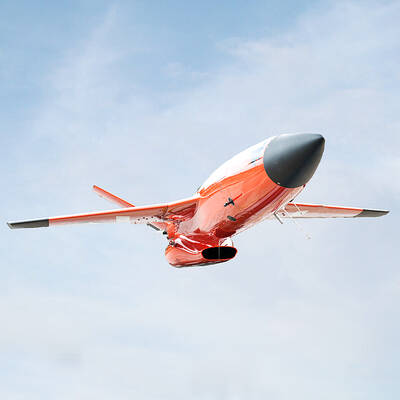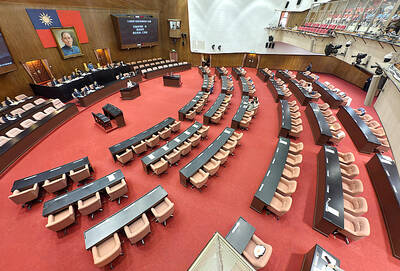The Kaohsiung City government has successfully turned decaying garbage in a closed landfill into a valuable source of alternative energy, with the largest methane power plant (
Four generators at the plant built at the municipal Hsichingpu (
As a landfill gas, methane is a productive fuel source that can be used to generate electricity rather than being allowed to escape into the atmosphere to contribute to global concentrations of greenhouse gases.
City officials' expectations are high for the plant because the landfill -- containing almost nine million tons of garbage -- should be able to produce fuel the plant for at least 20 years.
"Transforming hazardous landfill gases into useable fuel will create electricity as well as help solve our air pollution problems," said Chang Feng-teng (
The plant was designed by Cleanaway (
Cleanaway, under a 20-year contract with the Kaohsiung City government, will build three more generators in a bid to raise its total power capacity to 9500 kilowatts, supplying nearly 14,000 families every day in the future.
Since the landfill began operations in 1977, residents near the dump have complained of the terrible stench from what they claim have been improper methods of dealing with the waste, such as openly burning the refuse.
It was not until 1986 that city environmental officials began to treat the contaminated water that was seaping away from the dump. Prior to that time, the landfill was not properly insulated from the underlying soil and no provisions were made for collecting the methane gas that was escaping.
In the 1990s, the 48-hectare landfill became part of Kaohsiung's legacy of poor public management. The result was that in 1994 and 1995, several violent demonstrations were staged which created tension between local residents and the city government headed by Mayor Wu Tun-yi (吳敦義). At the time, Wu said that the landfill was nearly full and would be impossible to relocate.
Residents demanded that the former head of the environmental bureau, Wu Ming-yang (
When the landfill was finally closed in June 1999, the city government commissioned a study to turn the area in to a park.
In addition, a methane-fueled power plant was one of essential parts of the project.
Environmental official Chang said that the once putrid Hsichingpu Landfill would eventually be transformed into the "lungs of Kaohsiung," providing fresh air and an abundant supply of electricity.
The methane plant in Kaohsiung is the second in Taiwan. The Taipei City government built the first one last November at its Shanchuku Landfill (
It is also being operated by Cleanaway.

The Chien Feng IV (勁蜂, Mighty Hornet) loitering munition is on track to enter flight tests next month in connection with potential adoption by Taiwanese and US armed forces, a government source said yesterday. The kamikaze drone, which boasts a range of 1,000km, debuted at the Taipei Aerospace and Defense Technology Exhibition in September, the official said on condition of anonymity. The Chungshan Institute of Science and Technology and US-based Kratos Defense jointly developed the platform by leveraging the engine and airframe of the latter’s MQM-178 Firejet target drone, they said. The uncrewed aerial vehicle is designed to utilize an artificial intelligence computer

The Chinese Nationalist Party (KMT) caucus yesterday decided to shelve proposed legislation that would give elected officials full control over their stipends, saying it would wait for a consensus to be reached before acting. KMT Legislator Chen Yu-jen (陳玉珍) last week proposed amendments to the Organic Act of the Legislative Yuan (立法院組織法) and the Regulations on Allowances for Elected Representatives and Subsidies for Village Chiefs (地方民意代表費用支給及村里長事務補助費補助條例), which would give legislators and councilors the freedom to use their allowances without providing invoices for reimbursement. The proposal immediately drew criticism, amid reports that several legislators face possible charges of embezzling fees intended to pay

REQUIREMENTS: The US defense secretary must submit a Taiwan security assistance road map and an appraisal of Washington’s ability to respond to Indo-Pacific conflict The US Congress has released a new draft of the National Defense Authorization Act (NDAA), which includes up to US$1 billion in funding for Taiwan-related security cooperation next year. The version published on Sunday by US House of Representatives Speaker Mike Johnson removed earlier language that would have invited Taiwan to participate in the US-led Rim of the Pacific Exercise (RIMPAC). A statement on Johnson’s Web page said the NDAA “enhances U.S. defense initiatives in the Indo-Pacific to bolster Taiwan’s defense and support Indo-Pacific allies.” The bill would require the US secretary of defense to “enable fielding of uncrewed and anti-uncrewed systems capabilities”

Renewed border fighting between Thailand and Cambodia showed no signs of abating yesterday, leaving hundreds of thousands of displaced people in both countries living in strained conditions as more flooded into temporary shelters. Reporters on the Thai side of the border heard sounds of outgoing, indirect fire yesterday. About 400,000 people have been evacuated from affected areas in Thailand and about 700 schools closed while fighting was ongoing in four border provinces, said Thai Rear Admiral Surasant Kongsiri, a spokesman for the military. Cambodia evacuated more than 127,000 villagers and closed hundreds of schools, the Thai Ministry of Defense said. Thailand’s military announced that